“All my life's a circle," the pop group The New Seekers sang in 1972. Circles are all around us — from clocks and tables to wheels and plates. Circles also have been in our landscape for millennia — just think of the stone rings of Stonehenge in southern England. They continue to shape today's garden designs, both formal and informal. They may lie flat on the landscape, frame vistas or create doorways, and they come into our gardens three-dimensionally as spheres. Let's look at some examples of how this simple shape can be used to enliven garden designs.
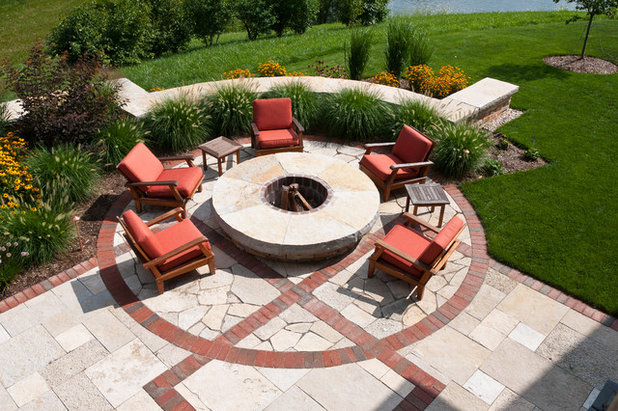
Ginkgo Leaf Studio
I am passionate about using geometric forms in garden designs, but circles are not always easy. If not used carefully, they can become rather artificial, grating against the other features of the design. Where circles are used, they must have a visual or practical purpose.
Here we see an almost perfect use of the circle, which acts not only as a full stop in the design, but as a practical setting for a seating and conservation area and also as a viewing platform overlooking the garden.
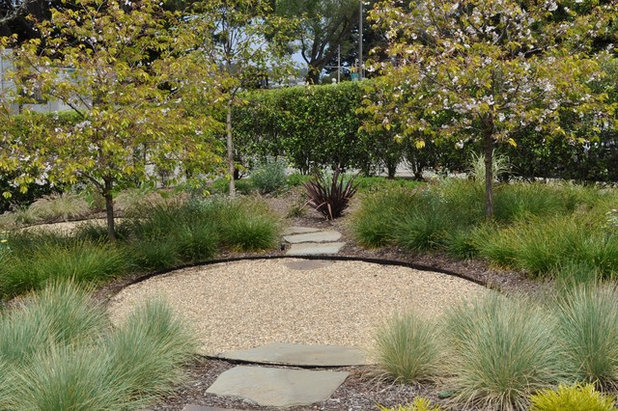
Huettl Landscape Architecture
In less-formal designs, circles can be used to add structure, making a statement within naturalistic plantings. The plantings here, though loose, emphasize the shape of the circle, leading the eye inward. The gravel within the circle is kept to a crisp shape with steel landscape edging that has a black painted finish.
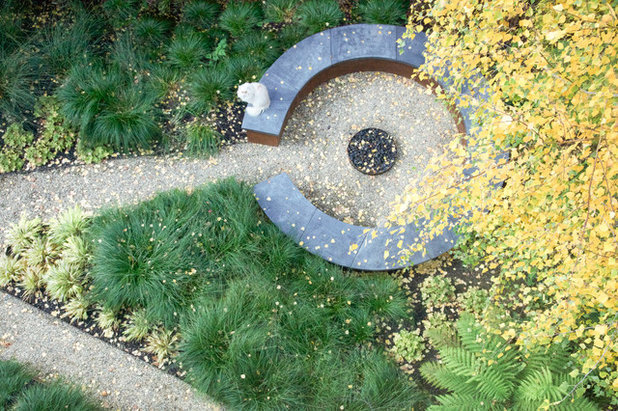
Thuilot Associates
Set among simple evergreen plants and overlooked by a silver birch tree, this circular patio is a perfect setting for reading and perhaps getting in touch with nature. The circle for the seating is inclusive and inward looking, something that a square or rectangle would not be.
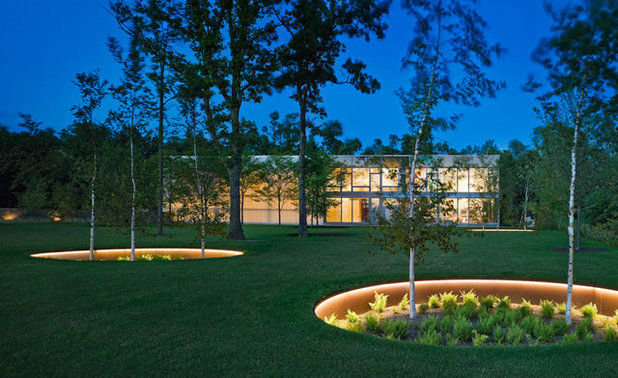
Wagner Hodgson
In the previous examples we saw the practical uses of circles, but sometimes it can be interesting to use them purely as a decorative feature. There couldn't be a more stunning use than these sunken, lit circles within a very minimalistic landscape. The circles seem to echo the circular canopies of the mature deciduous trees and bring a completeness to a very simple scheme.
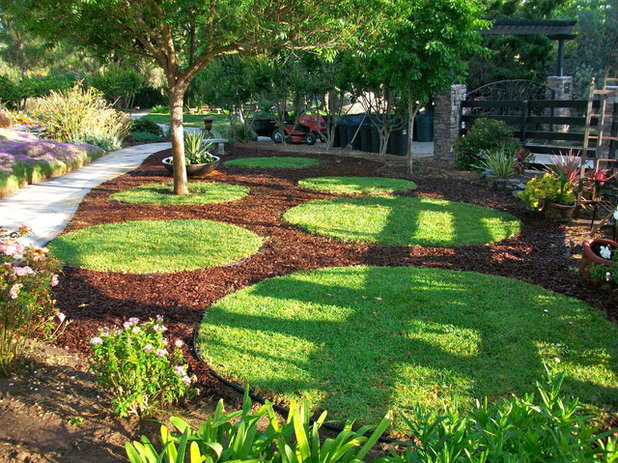
Rather like the ubiquitous crop circles found in cereal fields in various parts of the world, these grass circles make an interesting pattern. The grouping creates movement within the space without competing with the surrounding traditional plantings. Slim metal edging separates the circles from a weed-suppressing bark mulch.
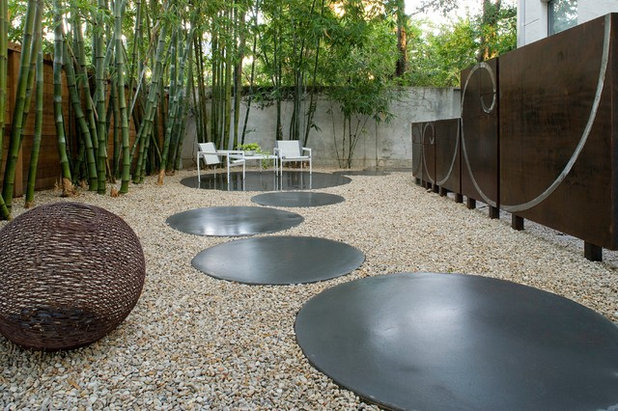
Exterior Worlds Landscaping & Design
The design of this garden links circles with a sphere that adds texture and dimension.
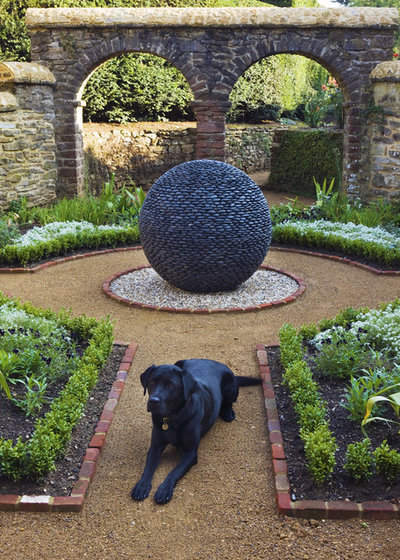
David Harber
Spheres make a statement, especially when set in a circular pathway. I first saw slate spheres like this one a few years ago at the Chelsea Flower Show, and since have seen them used as very effective water features — most dramatically when lit from the inside, creating a stunning night feature.
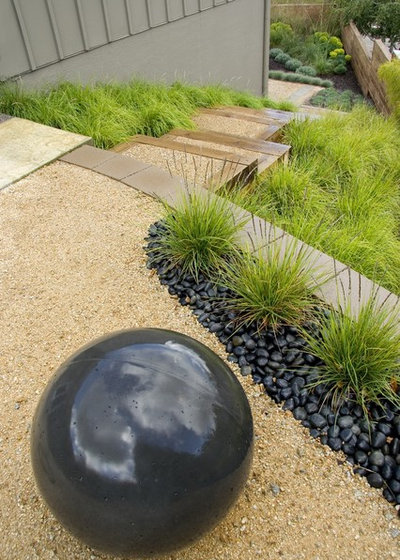
Jeffrey Gordon Smith Landscape Architecture
Spheres don't have to be large or dominate the space. Small ones can also create interest and lift a garden design.
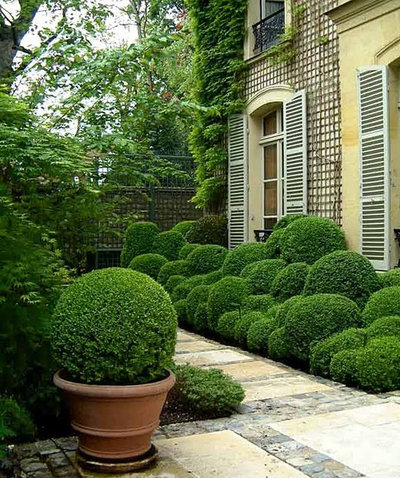
Living topiary spheres in containers can be moved depending on the season or just as the mood takes you. The most successful living spheres are formed from small-leaved evergreens that can be tightly clipped, such as boxwood (
Buxus sp) and the shrubby honeysuckle
Lonicera pileata.
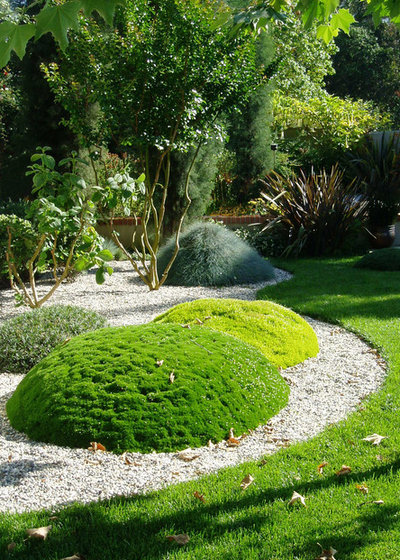
Living spheres also can be created through circular mounds planted in grasses or moss.
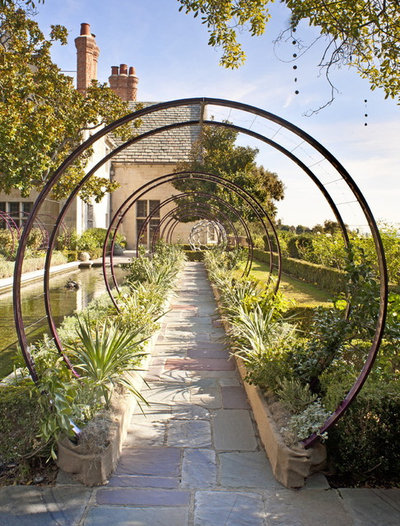
TerraTrellis
These circular iron arbors are a clever twist on the traditional pergola. With its vertical circles, the walkway both contains and concentrates the plantings while leading the eye to a viewpoint at the end of the path: an amazing pierced metal sphere. The metal circles have the feeling of a traditional moon gate.
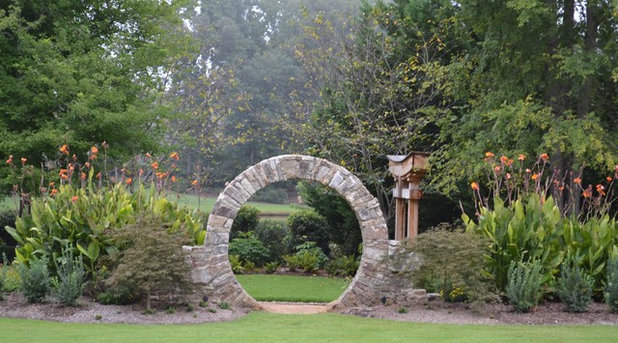
The traditional moon gate has roots in Chinese garden design, where it played an important part in the culture of prerevolutionary China. The structures as we now see them stem from the Chinese influence on English design in the 18th century.
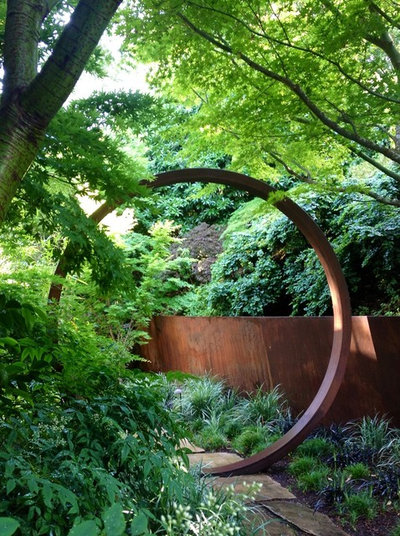
Greenworks Design
Perhaps the ultimate use of a circle in garden design is this wonderfully simple rusted metal moon gate. Though it creates a view and a passage through to the garden beyond, it is also sculptural in its own right.





